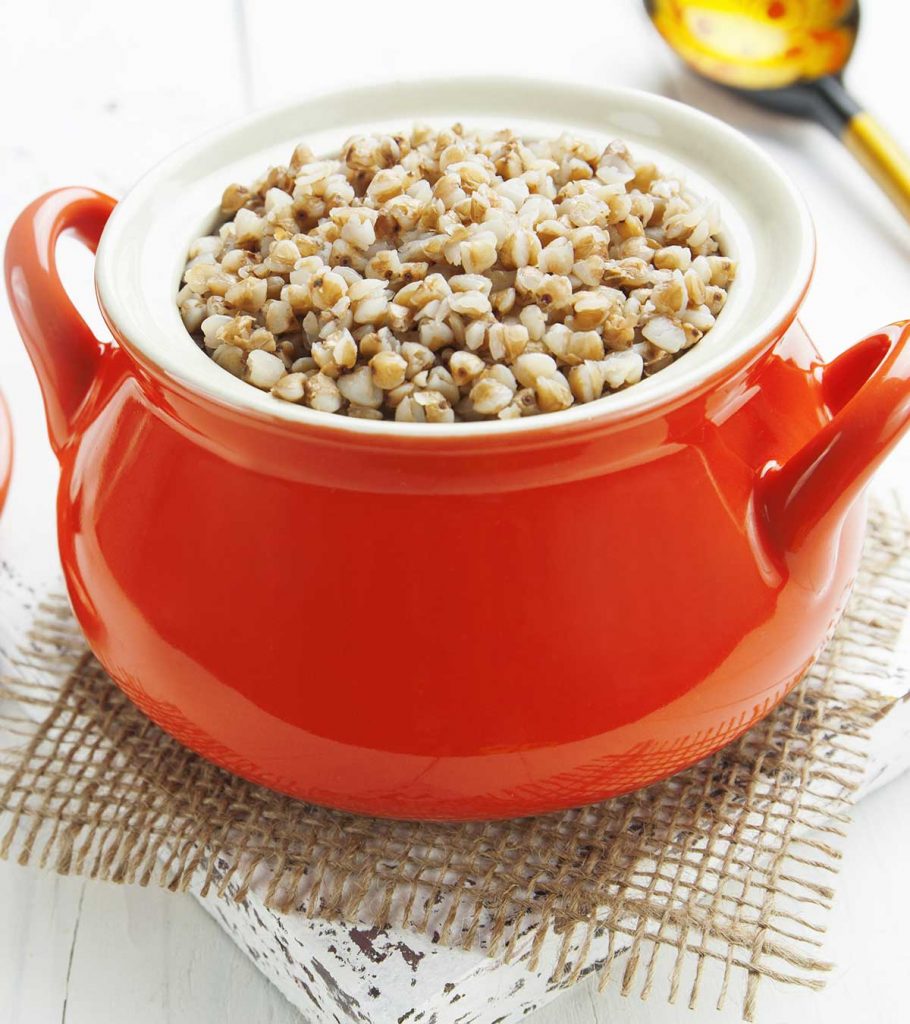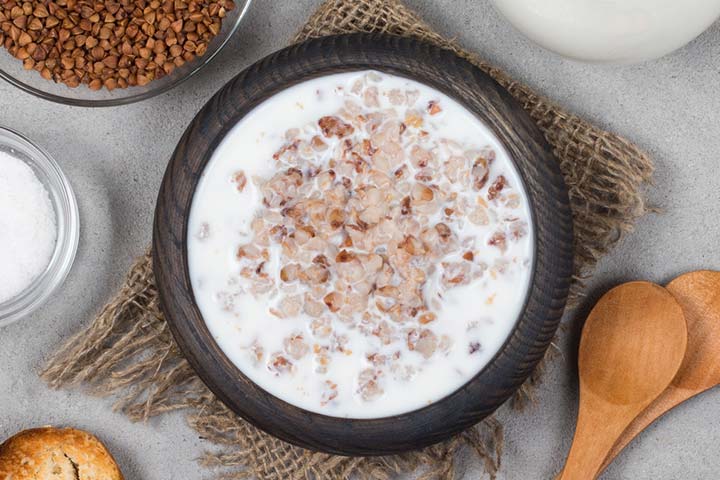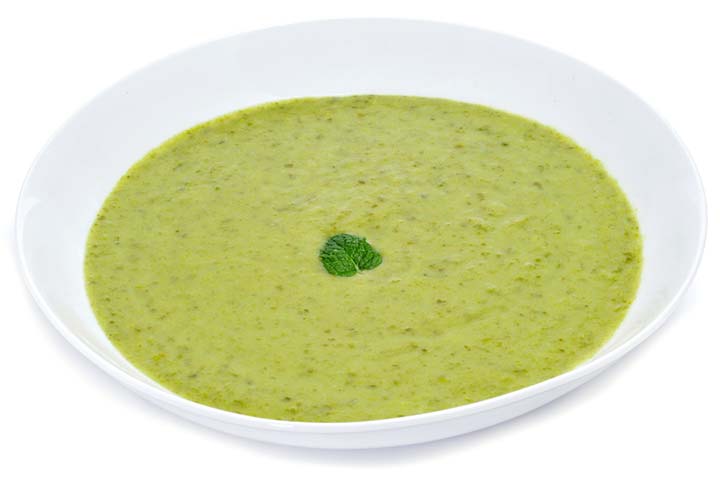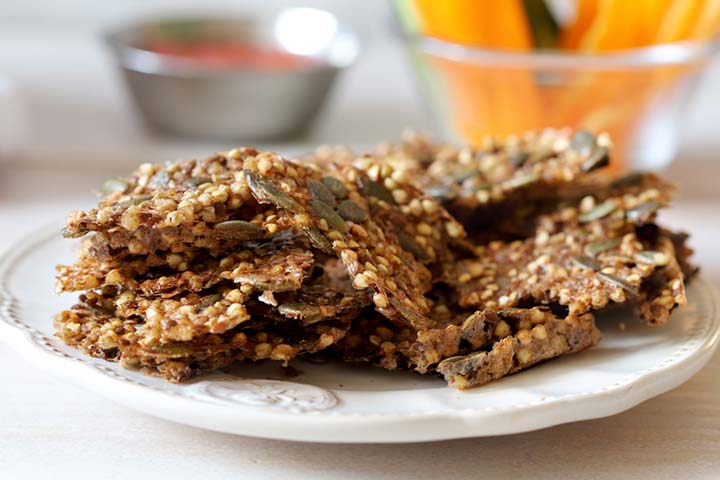Buckwheat for babies is considered a good complementary solid food by experts. It is a gluten-free pseudocereal like quinoa and is rich in minerals. Buckwheat is a whole grain containing many bioactive compounds and is a good energy source. It may be introduced to babies after six months of age; however, it is important to consult a doctor because the high amounts of minerals and fiber may cause stomach and intestinal issues. This post tells you about the health benefits of buckwheat for babies, its side effects, and practical ways to safely introduce it into your baby’s diet when they start solid foods.
Is Buckwheat Good For Babies?
Buckwheat is a nutrient-rich whole-grain, which is not a true grain but a seed known as a groat. These groats are considered beneficial for babies above six months of age. However, some parents prefer to delay its introduction up to eight months due to its high fiber content, which could be difficult to digest for young babies.
Buckwheat has demonstrated IgE-mediated allergic reactions in some cases. These allergies may increase the risk of food-induced anaphylaxis (severe allergic reaction) in some babies (1). Therefore, it is best to consult a pediatrician before adding buckwheat to your baby’s weaning diet.
Nutritional Composition Of Buckwheat
There are two most widely grown types of buckwheat – tartary buckwheat (Fagopyrum tartaricum) and common buckwheat (Fagopyrum esculentum) (2). The common buckwheat seeds are used to prepare buckwheat flour, which is then used to make products like pancake mixes and noodles.
One cup (120g) of whole-groat buckwheat flour could provide the following nutrients to meet the nutritional needs of your baby as per the recommended values (3) (4) (5) (6).
| Name | Amount | RDA |
| Water | 13.4g | – |
| Energy | 402Kcal | – |
| Protein | 15.1g | – |
| Total lipid (fat) | 3.72g | – |
| Carbohydrate, by difference | 84.7g | – |
| Fiber, total dietary | 12g | – |
| Calcium, Ca | 49mg | 270mg (7-12 months) |
| Iron, Fe | 4.87mg | 10mg (7-12 months) |
| Magnesium, Mg | 301mg | 60mg (7-12 months) |
| Phosphorus, P | 404mg | 275mg (7-12 months) |
| Potassium, K | 692mg | 700mg (7-12 months) |
| Zinc, Zn | 3.74mg | 5mg (7-12 months) |
| Copper, Cu | 0.618mg | 0.7mg (7-12 months) |
| Manganese, Mn | 2.44mg | 0.6 mg (7-12 months) |
Sources: U.S. Department of Agriculture, World Health Organization, and National Institutes of Health
Besides plain flour, you can make breakfast cereal from roasted buckwheat groats. Roasted groats (whole) of buckwheat are known as kasha (7).
Possible Health Benefits Of Buckwheat For Babies
Buckwheat is considered to have several health benefits in the long run. Here are some health benefits that could accrue over regular consumption.
- Supplies energy: Half a cup of cooked buckwheat groats provides approximately 77kcal (8) to meet the energy needs of your baby.
- Contains proteins:Lysine is an essential amino acid that your baby can get from buckwheat. Deficiency of lysine in infants can limit protein synthesis and cause weight loss (9).
- Supports growth and development: Buckwheat has a substantial content of magnesium, manganese, phosphorus, copper, and iron. All these minerals support the growth and development of babies and toddlers. Minerals in cooked buckwheat groats are particularly well-absorbed.
- Boosts gut health:Buckwheat contains a considerable amount of dietary fiber that helps maintain healthy bowel movement and aid digestion. Besides, it helps improve gut health by promoting probiotic functioning (10).
- Supports overall health: Regular consumption of buckwheat is associated with improved health due to its rich antioxidant profile. Some of the antioxidants found in buckwheat include rutin, quercetin, vitexin, and D-chiro-inositol. These bioactive compounds are known to reduce inflammation, strengthen immunity, manage sugar levels, and support heart health in the long run (11). Moreover, rutin has anti-inflammatory and anti-cancer properties. It thickens the walls of blood vessels and helps prevent arteriosclerosis as well.
Buckwheat is also gluten-free and is a suitable replacement of wheat for babies who have gluten sensitivity or allergy.
Possible Side Effects Of Buckwheat For Babies
Moderate consumption of buckwheat is unlikely to cause side effects. Here are some of the probable but rare side effects of buckwheat.
- Gastrointestinal issues: Buckwheat is high in fiber; thus, its overconsumption could cause constipation or diarrhea in some babies. Therefore, it is wise to keep the intake moderate.
- Allergic reactions: Buckwheat allergy is not common but is likely in cases of overconsumption. Buckwheat is also known to have cross-reactivity with latex and rice. Thus, if you or anyone in your family is allergic to latex or rice, then chances are that your baby might be allergic to buckwheat (12) (13) (14).
Buckwheat should be fed to the baby in moderation and as part of a balanced diet to avoid its adverse effects.
How To Select And Store Buckwheat?
Here are some tips to select and store buckwheat.
Selection
- Buy organic, non-GMO buckwheat from a reputable store.
- You can buy loose or packaged buckwheat. But in either case, check for quality.
- Inspect loose buckwheat for dust, dirt grits, and small stones. For packaged buckwheat, look for its quality of packaging, manufacturing date, and expiry details.
Storage
- You can store buckwheat flour for several months in an airtight container placed at a cool and dry place. Whole buckwheat seeds (grains) can be stored under similar conditions for up to a year. Always keep the grain/flour away from moisture.
- If you live in a warm climate, then store the grain/flour in a refrigerator.
Precautions To Take While Feeding Buckwheat To Babies
You can mitigate the side effects of buckwheat by taking some simple precautionary steps.
- Introduce buckwheat to your baby in cooked form, only. You can use buckwheat flour or whole-groats to feed a baby already consuming solids, such as rice.
- Feed no more than two teaspoons. You may increase the amount once your baby seems comfortable with the food.
- While introducing buckwheat, do not include any new food along with it. Follow a “three to five-day wait” rule to determine any intolerance, sensitivity, or allergy.
- As your baby gets comfortable, prepare age-appropriate recipes to feed buckwheat. For example, while a well-cooked buckwheat porridge is good for young babies, babies older than ten months can have buckwheat pancakes.
- Keep your baby hydrated to alleviate the risk of constipation due to high fiber content.
- If you or anyone in your family has buckwheat allergy, then check your baby for the same.
- If an allergy is confirmed, discontinue the use of buckwheat and any products that may contain buckwheat. Pasta, bread, and pizza dough are some of the common products that may contain buckwheat flour.
Is Feeding Your Baby Buckwheat A Potential Choking Hazard?
While buckwheat is generally not considered a choking hazard for babies, recipes, including pancakes or cookies, can be challenging for them to chew. For instance, adding buckwheat groats—hulled buckwheat seeds to cereals may pose a choking risk.
According to the US Centers for Disease Control and Prevention (CDC), choking rates are highest for babies under one (15). Most of the choking injuries are caused by food. Therefore, you need to make your baby sit and serve easily chewable and swallowable food. Keep a close eye on your baby while they eat, and serve them small portions to be safe.
Healthy Buckwheat Baby Food Recipes
Below are some age-specific buckwheat recipes that you can try for your baby. You can add a variety of food items from various food groups to intensify the overall nutritional value of these delicious homemade baby food recipes.
1. Buckwheat cereal
Buckwheat cereal is a healthy baby cereal to add to your little one’s diet. You can feed it for breakfast to keep them full until midday.
You will need:
- 3 cups water
- ½ cup buckwheat groats (roasted)
- 1tsp jaggery powder
How to:
- Take water in a pan and bring it to boil.
- Add the roasted buckwheat groats to the boiling water with constant stirring. Ensure there are no lumps.
- As the mixture boils, switch the flame to low. Cook the mixture for about 20-30 minutes with occasional stirring.
- Before serving, you can add some fruit purees or Greek yogurt to this cereal recipe to intensify its nutritional value.
2. Buckwheat and pear puree
Combining buckwheat with purees adds variety and nutrients to your baby’s diet. This recipe uses pear puree, but you can add buckwheat to any fruit or vegetable puree.
You will need:
- ½ cup zucchini (chopped)
- ½ cup pear (chopped)
- 1tbsp buckwheat flour
- 1tsp virgin olive oil
- Water
How to:
- Steam the zucchini and the pear for six minutes
- Take a medium-sized pan and add half a cup of water from the steamer and one tablespoon of buckwheat flour into the pan.
- Switch on the flame, keep it at low, and stir the mix continuously.
- As you see the mixture turning creamy in consistency, switch off the flame.
- Add steamed zucchini and pear to the mixture and blend everything into a smooth puree using an immersion blender.
- Add a teaspoon of olive oil and serve while still warm.
3. Buckwheat crackers
It is one of the finger foods toddlers would love to relish. Limited ingredients and quick cooking time make this recipe a favorite among moms, too.
You will need:
- 100 g buckwheat flour
- 50 g almonds
- 1 tsp flax seeds
- 2 tbsp olive oil
- Water (cold)
How to:
- Blend almonds, and flax seeds into a smooth powder.
- Pour this mix into a large bowl. Add buckwheat flour, olive oil, and cold water. While adding, stir continuously and ensure no lumps form.
- Mixing all the ingredients will give you dough. Knead this dough until it becomes smooth and soft to touch.
- Take two baking sheets and roll out the dough between them to get a thin layer.
- Remove the sheet from the top of the dough layer and cut the dough into the desired shape of cookies.
- Place the uncooked cookies on a greased baking tray and bake in a preheated static oven at 200°C (392°F) for 15 minutes.
- Remove from the oven, let them cool completely and serve.
Buckwheat is a nutrient-dense, gluten-free food most babies can consume between six and eight months. You can feed babies well-cooked buckwheat groats in easy-to-swallow and comfortable-to-digest forms like cereal/porridge or finger food. Alternatively, you can use buckwheat flour to prepare age-appropriate foods, such as pancakes, soups, and cookies, for babies and toddlers. You may also add buckwheat to other baby foods, such as vegetable puree, to raise their meal’s nutritional value and promote infant health. However, keep the intake in moderation to avert gastrointestinal issues arising due to overconsumption.
Key Pointers
- Buckwheat serves as a good source of fiber, vitamins, and minerals.
- Consult a doctor before introducing buckwheat as a solid food to babies from six months of age.
- Regular consumption of buckwheat supports growth and development, boosts gut health, and provides energy.
- Overconsumption of buckwheat can result in gastrointestinal issues and allergic reactions.
- To reduce the risks, feed fully cooked buckwheat in small amounts, keep the baby hydrated, and check for buckwheat allergy.















